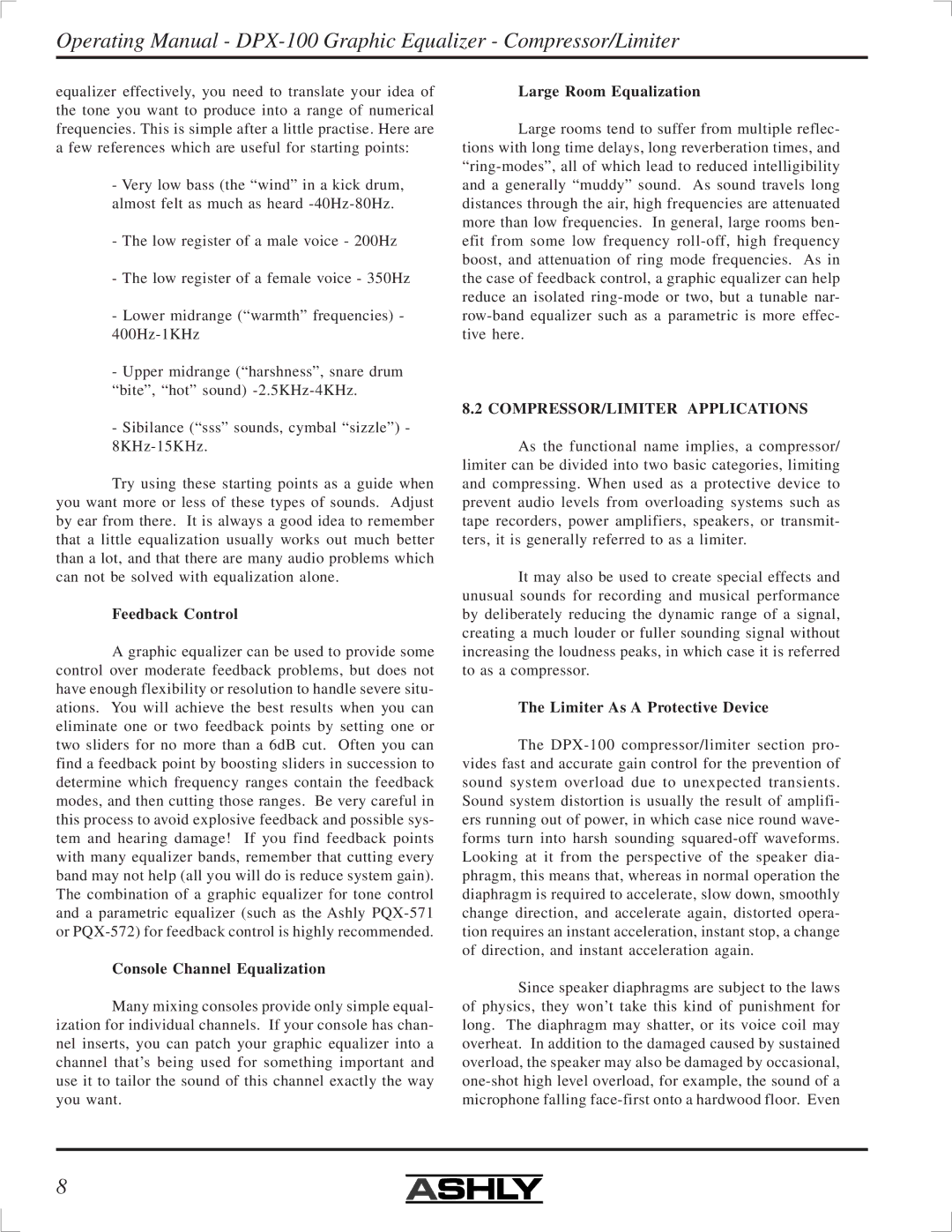
Operating Manual -
equalizer effectively, you need to translate your idea of the tone you want to produce into a range of numerical frequencies. This is simple after a little practise. Here are a few references which are useful for starting points:
-Very low bass (the “wind” in a kick drum, almost felt as much as heard
-The low register of a male voice - 200Hz
-The low register of a female voice - 350Hz
-Lower midrange (“warmth” frequencies) -
-Upper midrange (“harshness”, snare drum “bite”, “hot” sound)
-Sibilance (“sss” sounds, cymbal “sizzle”) -
Try using these starting points as a guide when you want more or less of these types of sounds. Adjust by ear from there. It is always a good idea to remember that a little equalization usually works out much better than a lot, and that there are many audio problems which can not be solved with equalization alone.
Feedback Control
A graphic equalizer can be used to provide some control over moderate feedback problems, but does not have enough flexibility or resolution to handle severe situ- ations. You will achieve the best results when you can eliminate one or two feedback points by setting one or two sliders for no more than a 6dB cut. Often you can find a feedback point by boosting sliders in succession to determine which frequency ranges contain the feedback modes, and then cutting those ranges. Be very careful in this process to avoid explosive feedback and possible sys- tem and hearing damage! If you find feedback points with many equalizer bands, remember that cutting every band may not help (all you will do is reduce system gain). The combination of a graphic equalizer for tone control and a parametric equalizer (such as the Ashly
Console Channel Equalization
Many mixing consoles provide only simple equal- ization for individual channels. If your console has chan- nel inserts, you can patch your graphic equalizer into a channel that’s being used for something important and use it to tailor the sound of this channel exactly the way you want.
Large Room Equalization
Large rooms tend to suffer from multiple reflec- tions with long time delays, long reverberation times, and
8.2 COMPRESSOR/LIMITER APPLICATIONS
As the functional name implies, a compressor/ limiter can be divided into two basic categories, limiting and compressing. When used as a protective device to prevent audio levels from overloading systems such as tape recorders, power amplifiers, speakers, or transmit- ters, it is generally referred to as a limiter.
It may also be used to create special effects and unusual sounds for recording and musical performance by deliberately reducing the dynamic range of a signal, creating a much louder or fuller sounding signal without increasing the loudness peaks, in which case it is referred to as a compressor.
The Limiter As A Protective Device
The
Since speaker diaphragms are subject to the laws of physics, they won’t take this kind of punishment for long. The diaphragm may shatter, or its voice coil may overheat. In addition to the damaged caused by sustained overload, the speaker may also be damaged by occasional,
8
